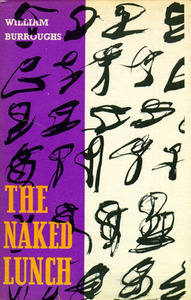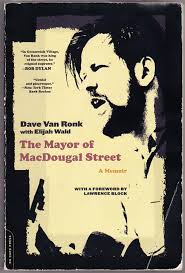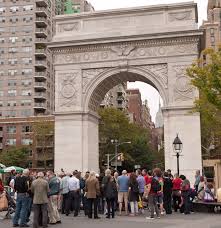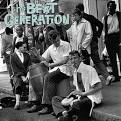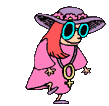 by John Clellon Holmes
by John Clellon Holmes
The New York Times Magazine, November 16, 1952
Several months ago, a national magazine ran a story under the heading “Youth” and the subhead “Mother Is Bugged At Me.” It concerned an eighteen-year-old California girl who had been picked up for smoking marijuana and wanted to talk about it. While a reporter took down her ideas in the uptempo language of “tea,” someone snapped a picture. In view of her contention that she was part of a whole new culture where one out of every five people you meet is a user, it was an arresting photograph. In the pale, attentive face, with its soft eyes and intelligent mouth, there was no hint of corruption. It was a face which could only be deemed criminal through an enormous effort of righteousness. Its only complaint seemed to be: “Why don’t people leave us alone?” It was the face of a beat generation.
That clean young face has been making the newspapers steadily since the war. Standing before a judge in a Bronx courthouse, being arraigned for stealing a car, it looked up into the camera with curious laughter and no guilt. The same face, with a more serious bent, stared from the pages of Life magazine, representing a graduating class of ex-GI’s, and said that as it believed small business to be dead, it intended to become a comfortable cog in the largest corporation it could find. A little younger, a little more bewildered, it was this same face that the photographers caught in Illinois when the first non-virgin club was uncovered. The young copywriter, leaning down the bar on Third Avenue, quietly drinking himself into relaxation, and the energetic hotrod driver of Los Angeles, who plays Russian Roulette with a jalopy, are separated only by a continent and a few years. They are the extremes. In between them fall the secretaries wondering whether to sleep with their boyfriends now or wait; the mechanic beering up with the guys and driving off toDetroit on a whim; the models studiously name-dropping at a cocktail party. But the face is the same. Bright, level, realistic, challenging.
Any attempt to label an entire generation is unrewarding, and yet the generation which went through the last war, or at least could get a drink easily once it was over, seems to possess a uniform, general quality which demands an adjective … The origins of the word “beat” are obscure, but the meaning is only too clear to most Americans. More than mere weariness, it implies the feeling of having been used, of being raw. It involves a sort of nakedness of mind, and, ultimately, of soul; a feeling of being reduced to the bedrock of consciousness. In short, it means being undramatically pushed up against the wall of oneself. A man is beat whenever he goes for broke and wagers the sum of his resources on a single number; and the young generation has done that continually from early youth.
Its members have an instinctive individuality, needing no bohemianism or imposed eccentricity to express it. Brought up during the collective bad circumstances of a dreary depression, weaned during the collective uprooting of a global war, they distrust collectivity. But they have never been able to keep the world out of their dreams. The fancies of their childhood inhabited the half-light of Munich, the Nazi-Soviet pact, and the eventual blackout. Their adolescence was spent in a topsy-turvy world of war bonds, swing shifts, and troop movements. They grew to independent mind on beachheads, in gin mills and U.S.O.’s, in past-midnight arrivals and pre-dawn departures. Their brothers, husbands, fathers or boy friends turned up dead one day at the other end of a telegram. At the four trembling corners of the world, or in the home town invaded by factories or lonely servicemen, they had intimate experience with the nadir and the zenith of human conduct, and little time for much that came between. The peace they inherited was only as secure as the next headline. It was a cold peace. Their own lust for freedom, and the ability to live at a pace that kills (to which the war had adjusted them), led to black markets, bebop, narcotics, sexual promiscuity, hucksterism, and Jean-Paul Sartre. The beatness set in later.
It is a postwar generation, and, in a world which seems to mark its cycles by its wars, it is already being compared to that other postwar generation, which dubbed itself “lost”. The Roaring Twenties, and the generation that made them roar, are going through a sentimental revival, and the comparison is valuable. The Lost Generation was discovered in a roadster, laughing hysterically because nothing meant anything anymore. It migrated to Europe, unsure whether it was looking for the “orgiastic future” or escaping from the “puritanical past.” Its symbols were the flapper, the flask of bootleg whiskey, and an attitude of desperate frivolity best expressed by the line: “Tennis, anyone?” It was caught up in the romance of disillusionment, until even that became an illusion. Every act in its drama of lostness was a tragic or ironic third act, and T.S. Eliot’s The Waste Land was more than the dead-end statement of a perceptive poet. The pervading atmosphere of that poem was an almost objectless sense of loss, through which the reader felt immediately that the cohesion of things had disappeared. It was, for an entire generation, an image which expressed, with dreadful accuracy, its own spiritual condition.
But the wild boys of today are not lost. Their flushed, often scoffing, always intent faces elude the word, and it would sound phony to them. For this generation lacks that eloquent air of bereavement which made so many of the exploits of the Lost Generation symbolic actions. Furthermore, the repeated inventory of shattered ideals, and the laments about the mud in moral currents, which so obsessed the Lost Generation, do not concern young people today. They take these things frighteningly for granted. They were brought up in these ruins and no longer notice them. They drink to “come down” or to “get high,” not to illustrate anything. Their excursions into drugs or promiscuity come out of curiosity, not disillusionment.
Only the most bitter among them would call their reality a nightmare and protest that they have indeed lost something, the future. For ever since they were old enough to imagineone, that has been in jeopardy anyway. The absence of personal and social values is to them, not a revelation shaking the ground beneath them, but a problem demanding a day-to-day solution. How to live seems to them much more crucial than why. And it is precisely at this point that the copywriter and the hotrod driver meet and their identical beatnessbecomes significant, for, unlike the Lost Generation, which was occupied with the loss of faith, the Beat Generation is becoming more and more occupied with the need for it. As such, it is a disturbing illustration of Voltaire’s reliable old joke: “If there were no God, it would be necessary to invent him.” Not content to bemoan his absence, they are busily and haphazardly inventing totems for him on all sides.
For the giggling nihilist, eating up the highway at ninety miles an hour and steering with his feet, is no Harry Crosby, the poet of the Lost Generation who planned to fly his plane into the sun one day because he could no longer accept the modern world. On the contrary, the hotrod driver invites death only to outwit it. He is affirming the life within him in the only way he knows how, at the extreme. The eager-faced girl, picked up on a dope charge, is not one of those “women and girls carried screaming with drink or drugs from public places,” of whom Fitzgerald wrote. Instead, with persuasive seriousness, she describes the sense of community she has found in marijuana, which society never gave her. The copywriter, just as drunk by midnight as his Lost Generation counterpart, probably reads God and Man at Yale during his Sunday afternoon hangover. The difference is this almost exaggerated will to believe in something, if only in themselves. It is a will to believe, even in the face of an inability to do so in conventional terms. And that is bound to lead to excesses in one direction or another.
The shock that older people feel at the sight of this Beat Generation is, at its deepest level, not so much repugnance at the facts, as it is distress at the attitudes which move it. Though worried by this distress, they most often argue or legislate in terms of the facts rather than the attitudes. The newspaper reader, studying the eyes of young dope addicts, can only find an outlet for his horror and bewilderment in demands that passers be given the electric chair. Sociologists, with a more academic concern, are just as troubled by the legions of young men whose topmost ambition seems to be to find a secure birth in a monolithic corporation. Contemporary historians express mild surprise at the lack of organized movements, political, religious, or otherwise, among the young. The articles they write remind us that being one’s own boss and being a natural joiner are two of our most cherished national traits. Everywhere people with tidy moralities shake their heads and wonder what is happening to the younger generation.
Perhaps they have not noticed that, behind the excess on the one hand, and the conformity on the other, lies that wait-and-see detachment that results from having to fall back for support more on one’s capacity for human endurance than on one’s philosophy of life. Not that the Beat Generation is immune to ideas; they fascinate it. Its wars, both past and future, were and will be wars of ideas. It knows, however, that in the final, private moment of conflict a man is really fighting another man, and not an idea. And that the same goes for love. So it is a generation with a greater facility for entertaining ideas than for believing in them. But it is also the first generation in several centuries for which the act of faith has been an obsessive problem, quite aside from the reasons for having a particular faith or not having it. It exhibits on every side, and in a bewildering number of facets, a perfect craving to believe.
Though it is certainly a generation of extremes, including both the hipster and the radical young Republican in its ranks, it renders unto Caesar (i.e, society) what is Caesar’s and unto God what is God’s. For the wildest hipster, making a mystique of bop, drugs and the night life, there is no desire to shatter the “square” society in which he lives, only to elude it. To get on a soapbox or write a manifesto would seem to him absurd. Looking at the normal world, where most everything is a “drag” for him, he nevertheless says: “Well, that’s the Forest of Arden after all. And even it jumps if you look at it right.” Equally, the young Republican, though often seeming to hold up Babbitt as his culture hero, is neither vulgar nor materialistic, as Babbitt was. He conforms because he believes it is socially practical, not necessarily virtuous. Both positions, however, are the result of more or less the same conviction — namely that the valueless abyss of modern life is unbearable.
A generation can sometimes be better understood by the books it reads, than by those it writes. The literary hero of the Lost Generation should have been Bazarov, the nihilist inTurgenev’s “Fathers and Sons.” Bazarov sat around, usually in the homes of the people he professed to loathe, smashing every icon within his reach. He was a man stunned into irony and rage by the collapse of the moral and intellectual structure of his world.
But he did nothing. The literary hero of the Beat Generation, on the other hand, might be Stavrogin, that most enigmatic character in “The Possessed” by Dostoevski. He is also a nihilist, or at least intimately associated with them.
But there is a difference, for Stavrogin, behind a façade very much like Bazarov’s, is possessed by a passion for faith, almost any faith. His very atheism, at its extreme, is metaphysical. But he knows that disbelief is fatal, and when he has failed in every way to overcome it, he commits suicide because he does not have what he calls “greatness of soul.” The ground yawned beneath Bazarov, revealing a pit into which he fell; while Stavrogin struggled at the bottom of that pit, trying feverishly to get out. In so far as it resembles Stavrogin, there have been few generations with as natural and profound a craving for convictions as this one, nor have there been as many generations as ill-equipped to find them.
For beneath the excess and the conformity, there is something other than detachment. There are the stirrings of a quest. What the hipster is looking for in his “coolness” (withdrawal) or “flipness” (ecstasy) is, after all, a feeling on somewhereness, not just another diversion. The young Republican feels that there is a point beyond which change becomes chaos, and what he wants is not simply privilege or wealth, but a stable position from which to operate. Both have had enough of homelessness, valuelessness, faithlessness.
The variety and the extremity of their solutions are only a final indication that for today’s young people there is not as yet a single external pivot around which they can, as a generation, group their observations and their aspirations. There is no single philosophy, no single party, no single attitude. The failure of most orthodox moral and social concepts to reflect fully the life they have known is probably the reason for this, but because of it each person becomes a walking, self-contained unit, compelled to meet, or at least endure, the problem of being young in a seemingly helpless world in his own way.
More than anything else, this is what is responsible for this generation’s reluctance to name itself, its reluctance to discuss itself as a group, sometimes its reluctance to be itself. For invented gods invariably disappoint those who worship them. Only the need for them goes on, and it is this need, exhausting one object after another, which projects the Beat Generation forward into the future and will one day deprive it of its beatness.
Dostoevski wrote in the early 1880’s that “Young Russia is talking of nothing but the eternal questions now.” With appropriate changes, something very like this is beginning to happen in America, in an American way; a re-evaluation of which the exploits and attitudes of this generation are only symptoms. No single comparison of one generation against another can accurately measure effects, but it seems obvious that a lost generation, occupied with disillusionment and trying to keep busy among the broken stones, is poetically moving, but not very dangerous. But a beat generation, driven by a desperate craving for belief and as yet unable to accept the moderations which are offered it, is quite another matter. Thirty years later, after all, the generation of which Dostoevski wrote was meeting in cellars and making bombs.
This generation may make no bombs; it will probably be asked to drop some, and have some dropped on it, however, and this fact is never far from its mind. It is one of the pressures which created it and will play a large part in what will happen to it. There are those who believe that in generations such as this there is always the constant possibility of a great new moral idea, conceived in desperation, coming to life. Others note the self-indulgence, the waste, the apparent social irresponsibility, and disagree.
But its ability to keep its eyes open, and yet avoid cynicism; its ever-increasing conviction that the problem of modern life is essentially a spiritual problem; and that capacity for sudden wisdom which people who live hard and go far possess, are assets and bear watching. And, anyway, the clear, challenging faces are worth it
0.000000
0.000000
 Kerouac’s Lowell: A Life on the Concord and Merrimack Rivers
Kerouac’s Lowell: A Life on the Concord and Merrimack Rivers


